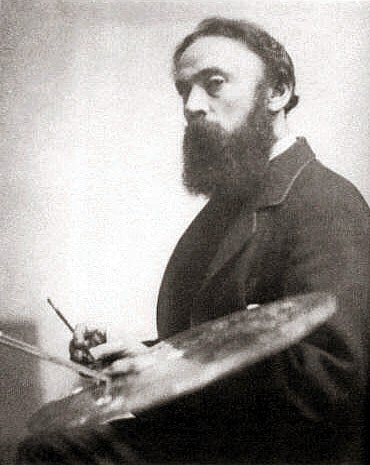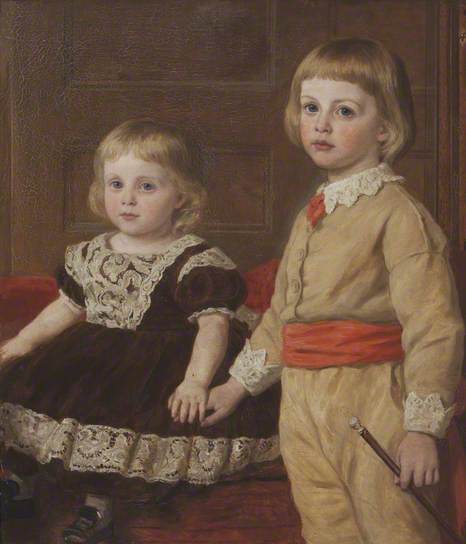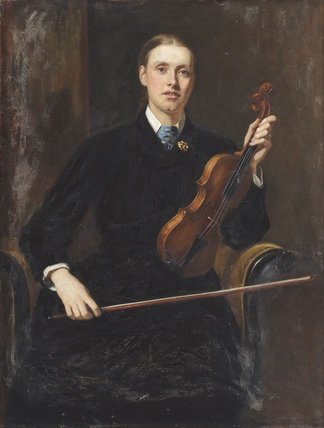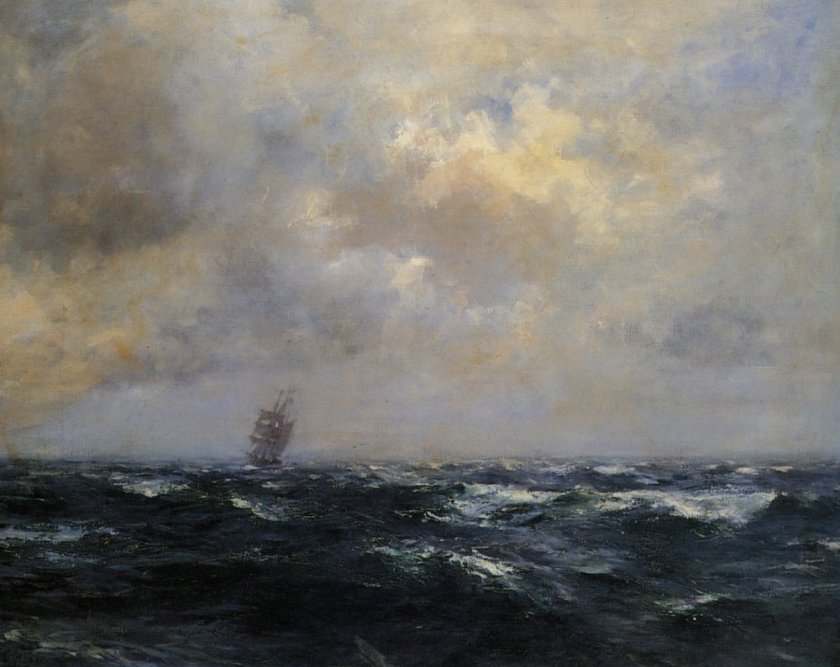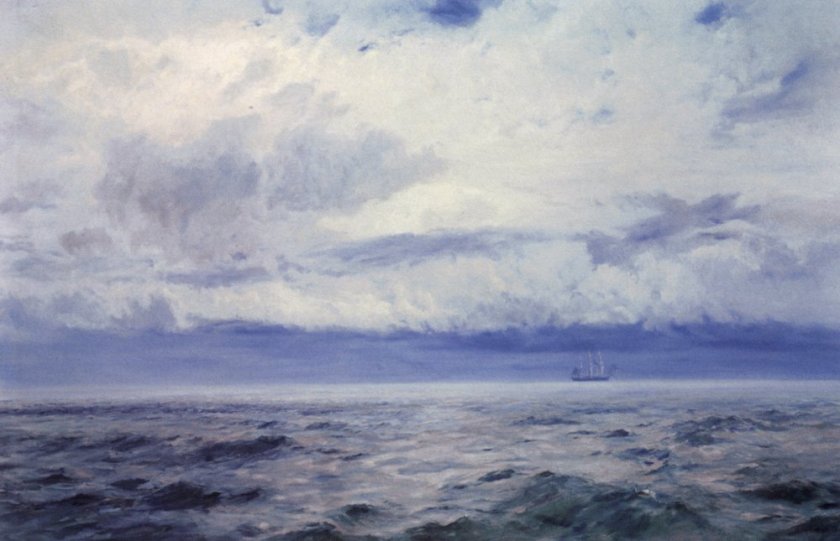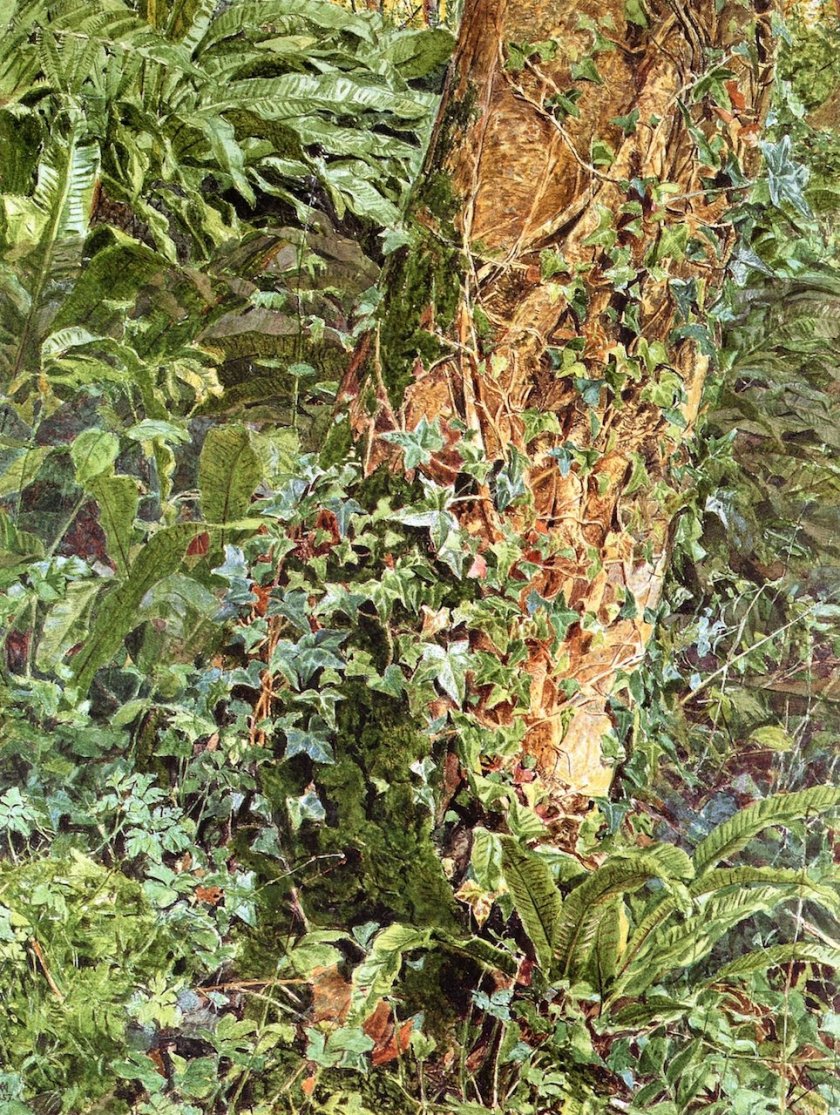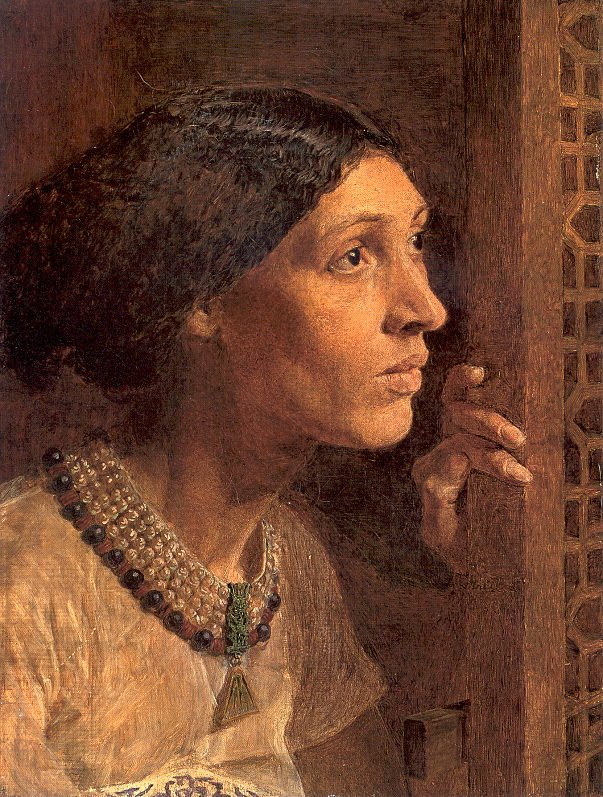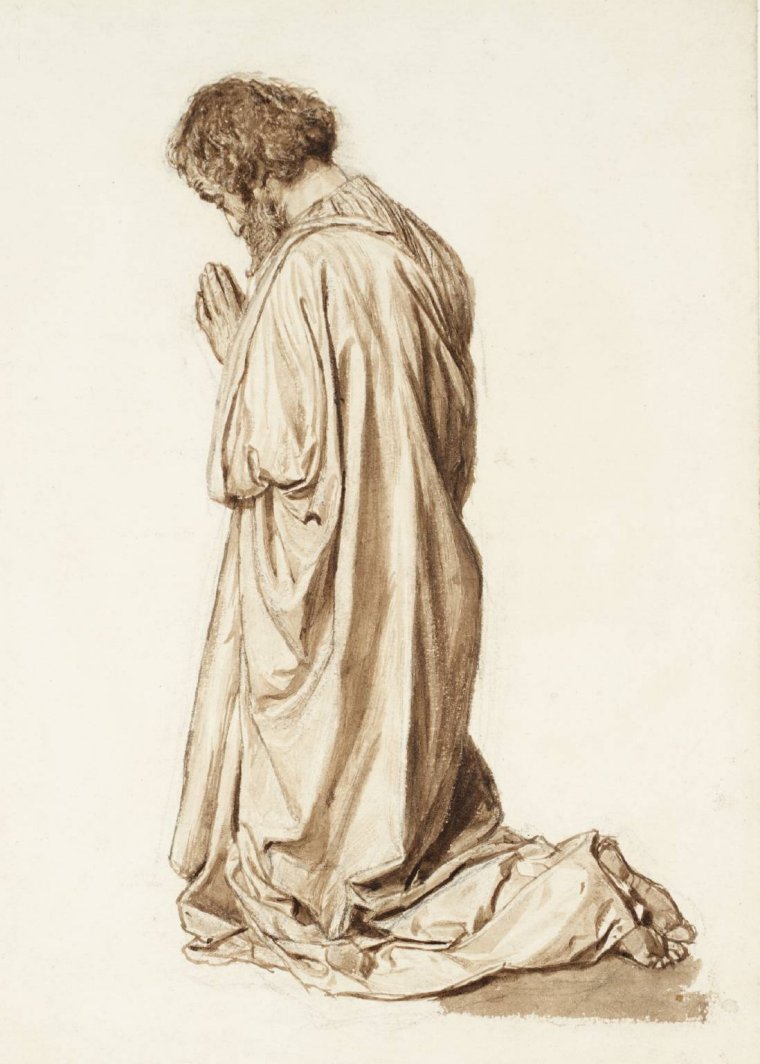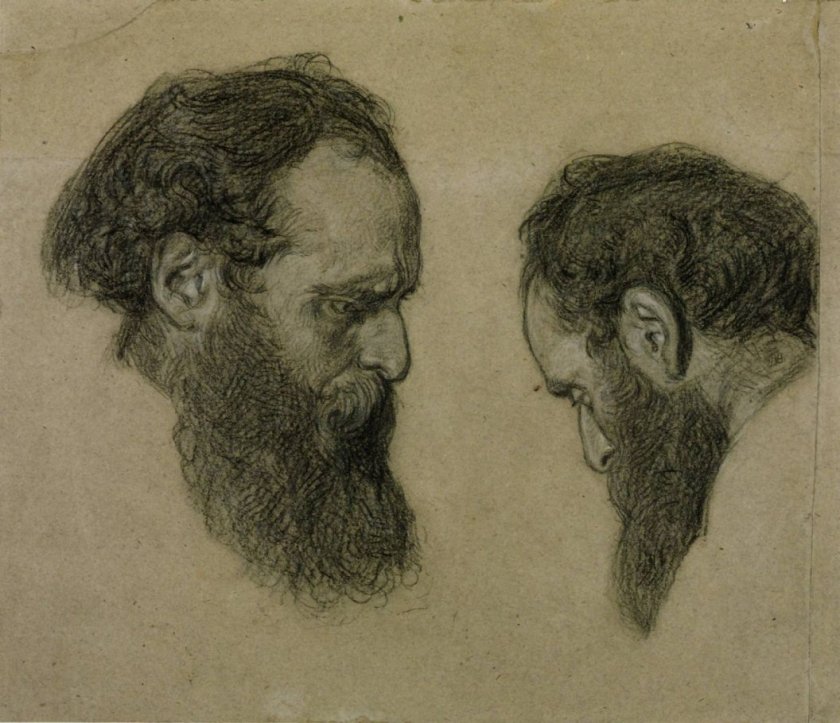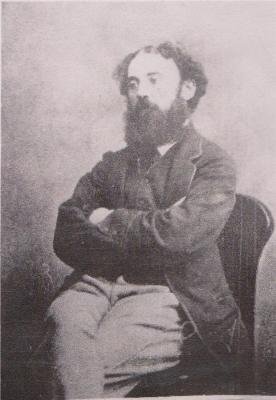
At the end of my last blog I had reached the point in Albert Moore’s life with him travelling to Rome with his brother John Collingham Moore just after his twenty-first birthday. Whilst travelling around the Roman Campagna he was able to observe the effects of colour which were presented to him under local conditions of light and atmosphere. He travelled to Naples and Pompeii and throughout his stay he would copy classical statuary and Renaissance paintings. His stay in Italy was cut short after five months when he received news about his mother’s death on the twenty-eighth of January 1863. Albert returned to London in the Spring and set up home in a studio at 12 Newman Street in West London and immersed himself in the many commissions he received.
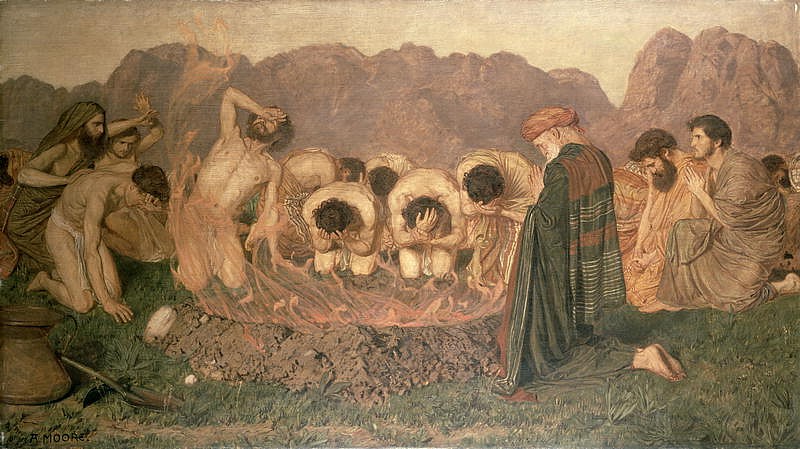
It was also here that he held a one-man show featuring some of his works of art, including the newly completed Elijah’s Sacrifice (see previous blog). One visitor to this show was Frederick George Stephens, an art critic, and one of the two ‘non-artistic’ members of the Pre-Raphaelite Brotherhood. He gave his approval to Albert’s paintings and expressed the joy of discovering new young artists. He wrote in the February 1864 issue of the London literary magazine, Athenaeum, in his regular review of the Arts, Fine-Art Gossip:
“…a critic’s pleasantest office is to call attention to works, from their nature, do not catch the eye of everyone…”
The small exhibition in his studio proved a great success. It was unusual for an artist to show works in their own studio but Albert needed the money and needed to market himself and attract buyers but it was also a declaration of his own independence. Albert Moore knew that he could not solely rely on the Royal Academy to show his work as he was only too well aware of the vagaries of the RA Selection Committee, who had a penchant of choosing works by its own Academicians rather than featuring young artists who were not RA members. Albert had first-hand experience of this when, in 1864, the Selection Committee had rejected his work Elijah’s Sacrifice.
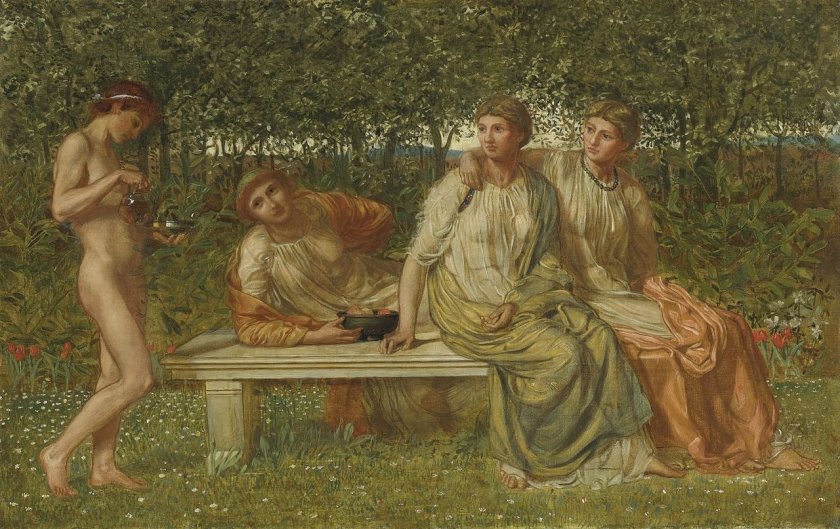
Whether Albert altered the painting is not known but in 1865 it was accepted by the RA Selection Committee! Along with that work he also had accepted into that year’s Academy exhibition his painting entitled The Marble Seat. It was a turning point in Moore’s career as the critics loved his two works. The Marble Seat tells no story and does not illustrate any incident in history. It is merely a composition of four figures, one male and three females, all of whom are grouped around a flat stone seat. The background comprises of flowers including red tulips, trees and through the trees we are able to see a flat hinterland which leads to a range of blue hills. The nude male stands to the right of the picture and we see him pouring wine into a cup. The three girls, all dressed in almost transparent white draperies, over which are thicker orange, green and scarlet wraps, sit or lean against the marble seat. The seat is positioned on green lawn which seems to twinkle with small white daisies.
Leading magazines raved about the works of this up and coming young artist. According to the critics Moore and some other young painters were breaking new ground in modern British painting by treating the human figure on a monumental scale unlike other older and well established artists who preferred to stick to small-scale homely themes.
However not to be deterred by the vagaries of the R.A., Albert Moore joined a group of artists, which included his brother Henry Moore, the Jewish pre-Raphaelite painter, Simeon Solomon, John Everett Millais and the historical painter, Edward Poynter. Ironically, both Millais and Poynter would later become presidents of the Royal Academy. This group chose the Dudley Gallery in London as the venue for exhibiting their paintings.
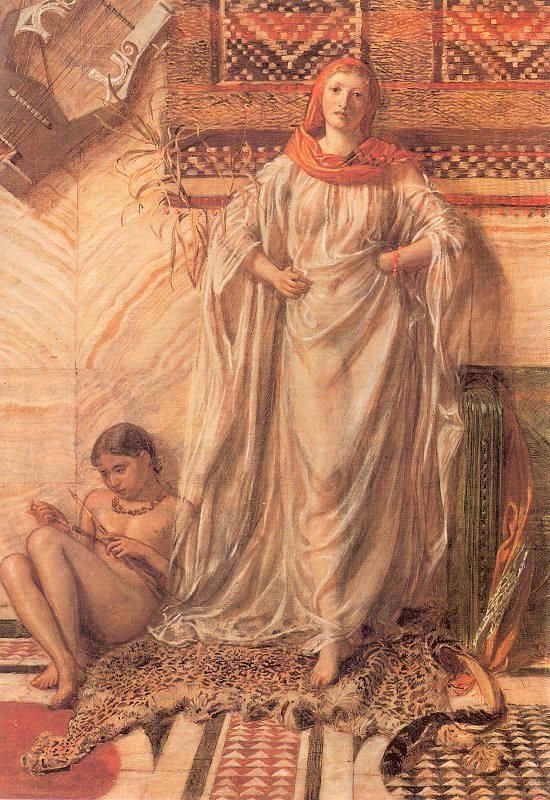
In 1864 Moore’s one-man show included his painting entitled Dancing Girl Resting. It was noted that since returning from Rome, Albert Moore’s painting style and subject choice had changed. The “new” Albert Moore can well be seen in this beautifully crafted 1864 painting. Before us we see a tall girl, with a red scarf twisted around her head and shoulders, dressed in a full-length diaphanous shift standing on a leopard-skin rug which kept her feet away from the cold tiles. She is leaning against a warm grey marble wall on which hangs a lyre and an ornamental woven mat. The combination of the rug, the marble tiles and woven textiles adds an air of decadence. The art critic, Frederick Stevens, in his Fine-Art Gossip column in the February 1864 edition of the Athenaeum described the girl’s somewhat erotic stance:
“…panting through parted lips, with heaving bust, her arms akimbo, and hands upon her hips…”
There is sensuousness and something erotic about this work. Although she is not naked, we can see the contours of her naked body through the gossamer-like shift. Look at the beautiful way Moore has executed the many folds of the shift which gives it a feeling of movement even though the dancer is at rest. Although the title talks about the dancer resting, it is the small figure of the dark-skinned girl, who besides a strand of beads is naked. She can be seen slumped limply on the floor besides the dancer who looks more at rest.

It is thought that Albert Moore was starting to be influenced by his friend Simeon Solomon whose paintings around this time showed a certain sensuousness such as in his 1864 painting, Sappho and Erinna in a Garden at Mytilene. In that painting we see Sappho embracing her fellow poet Erinna in a garden at Mytilene on the island of Lesbos. According to legend, Sappho was born at Lesbos in about 612BC. After having been exiled to Sicily she returned to the island and was at the centre of a community of young women devoted to Aphrodite and the Muses.

Philip Henry Rathbone was a Liverpool insurance underwriter and Liberal Council member. He came from a very wealthy family of merchants. He was also an avid art collector and one time was a member of the Hanging Committee of the Liverpool Autumn Exhibition. Amongst his friends was James McNeil Whistler. Rathbone bought both The Marble Seat and my next featured work of Albert Moore, The Shulamite. A Shulamite is a female name in Hebrew and means peaceful. The name corresponds to Solomon as Julia does to Julius. It is the figurative name of the bride in Solomon’s Song and the bridegroom is represented by Solomon which also means peaceful. The large oil painting, measuring 210 x 96cms is now housed in the Walker Art Gallery in Liverpool. The painting appeared at the Royal Academy in 1866 but although it had been passed by the conservative Hanging Committee it, along with some other “audacious” paintings, were given an adverse hanging placement. This and the other works, although placed in the prestigious North Room, were placed so high on the wall they were almost invisible to visitors. Some would say a revengeful act by the Hanging Committee! The May 22nd issue of the Times carried an article by the art correspondent, who reported on the exhibition and noted the poor positioning of Albert Moore’s work, writing:
“……..suffers more from its elevation, for its merits are of a more delicate and subtle kind……its exquisite draperies, clothing exquisite form [are] wholly out of sight…”
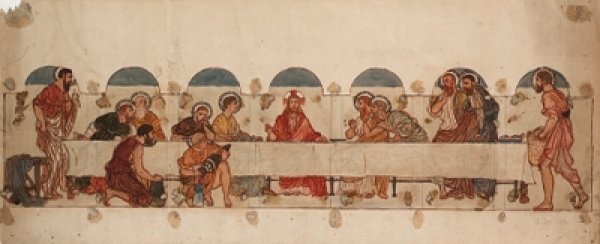
In 1865, Albert Moore received a commission to carry out some wall paintings for the Church of St Alban in Rochdale. The commission had come his way through good auspices of his friend, the architect William Eden Nesfield, whom he had travelled with to Northern France, five years earlier. These wall painings were painted in oils directly on to the plaster surface of the walls. The commission took most of 1865 and 1866 to complete and to complete the commission, Moore had to move a large quantity of his materials from London to Rochdale by train. His biographer, Alfred Lys Baldry, tells the amusing anecdote of the start of this journey from Albert’s studio to Euston Station:
“…so heavily did he load the cab which was conveying him from his studio in Russell Place to Euston Station, that in mid-journey the bottom came out, and he and his brother Henry, who was going to see him off, had to run along inside for some distance, until the attention of the driver could be called to the mishap….”
The wall paintings in St Alban’s Church occupy the whole of the upper chancel and consist of several separate subjects, two being The Last Supper and The Feeding of the Five Thousand.
In the final part of my look at the life and works of Albert Joseph Moore I will showcase more works of art dedicated to female beauty.
———————————————————————————–
Again, most of the information I have used in this and the previous blog have come from two books, biographies of Albert Joseph Moore. They are:
Albert Moore, his life and works, by Alfred Lys Baldry (1894)
Albert Moore by Robin Asleson (published by Phaidon)

